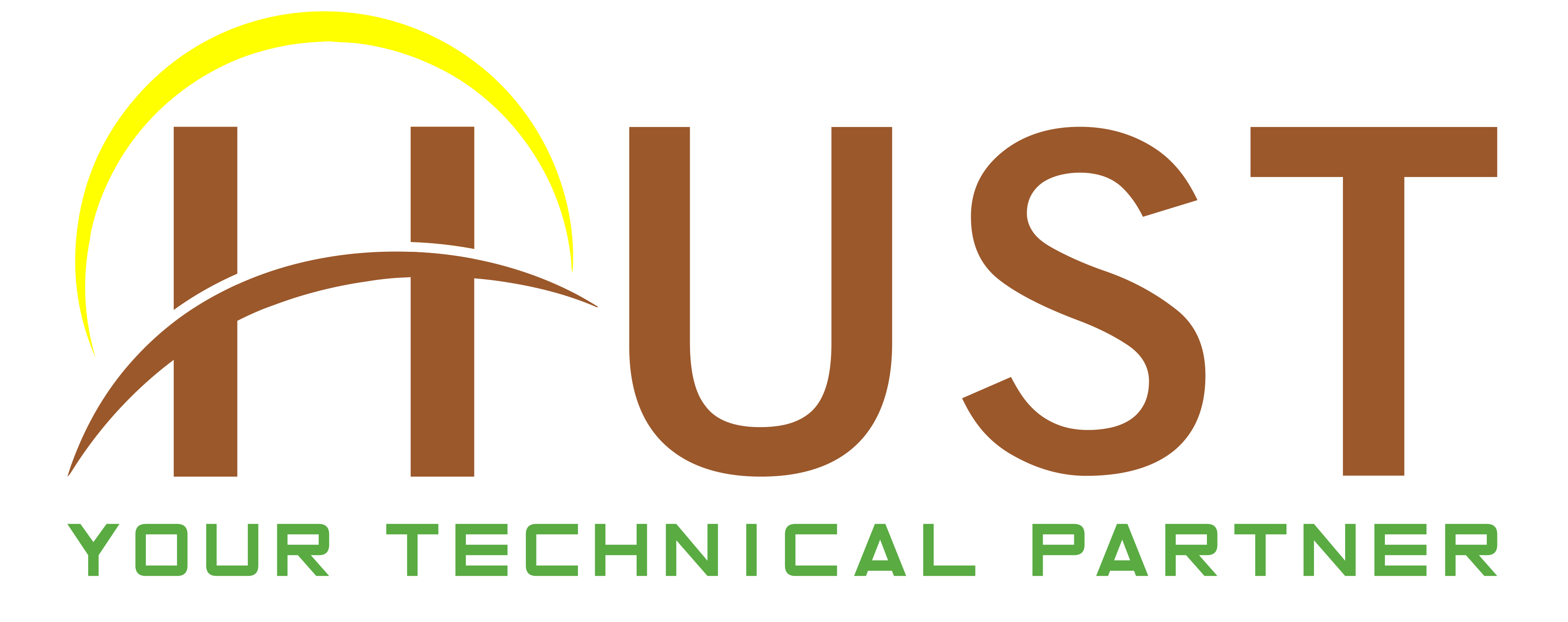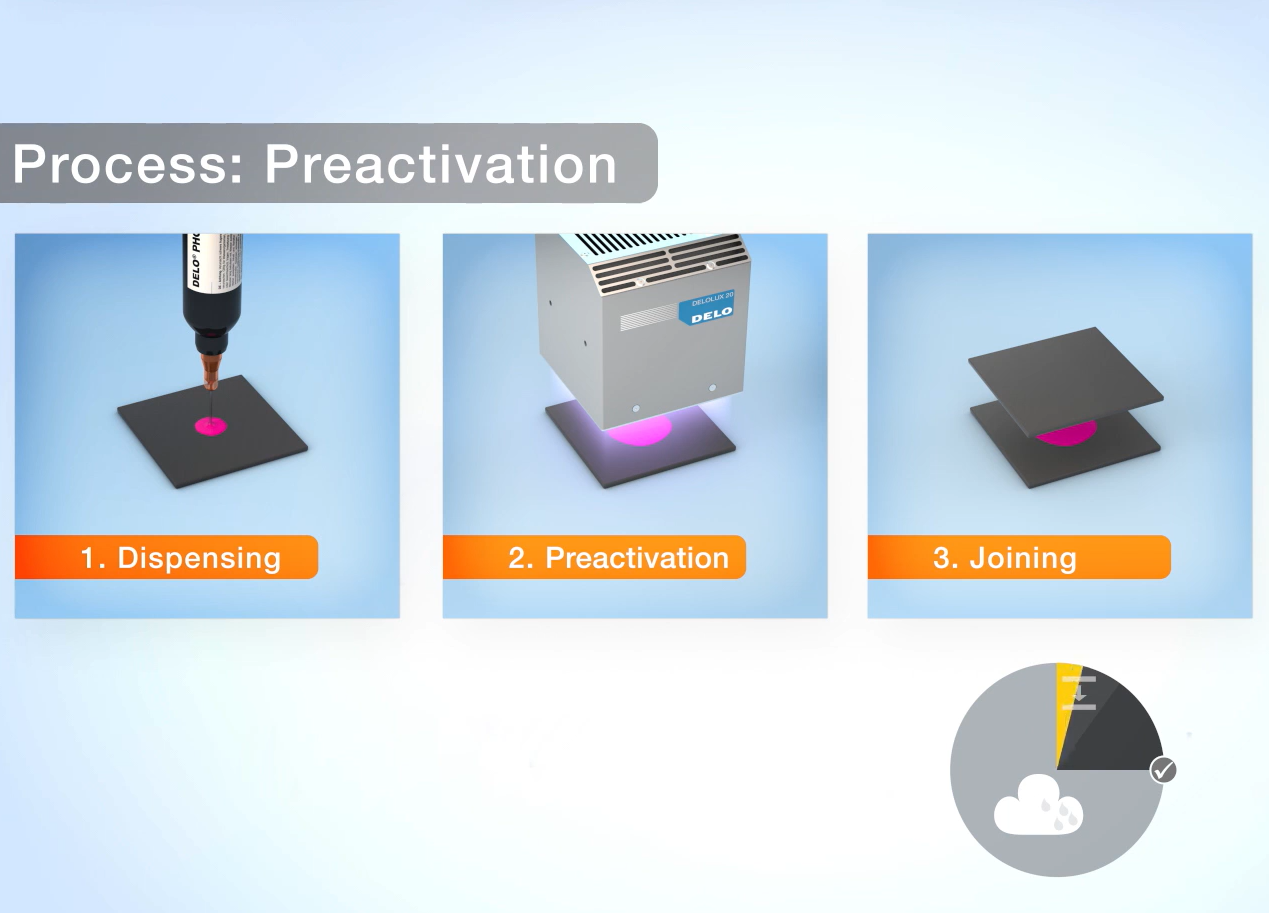
PRE-ACTIVATION METHOD: NEW INNOVATIONS FOR OPAQUE SURFACE BONDING
10:11 - 14/06/2021
The glue layer after being dispensed on the first surface will be irradiated with UV light for a few seconds to activate the curing reaction, while the glue is still in a wet state, the open time is about 20 seconds after activated, enough for us to join the second surface on.
MEDMIX - Disposable Static Mixers
Cheaper and simpler micro-optics production
Adhesive for chip RFID in the smart card
ICA, ACA and TCA adhesives: Classification and applications
DELO ADHESIVES - HIGH SPEED CARRIER BONDING
For a factory that produces thousands of products a year, fully automating production and shortening the adhesive cycle is extremely necessary. The PHOTOBOND series of light-curing adhesives or both DUALBOND (double curing) light and temperature-curing adhesives are the optimal solution for this purpose.
The use of PHOTOBOND light-curing adhesive requires at least one transparent surface to allow light to pass through, such as glass, PC plastic, or PMMA. Only when there is enough light energy can the chemical curing reaction take place completely.

Regarding the basic principle of the light-curing method, although the adhesive surfaces are opaque, the glue can still cure if the glue layer between the two surfaces is exposed, visible. UV irradiation then cures this outer edge adhesive, a process known as component fixation. Although the glue can still cure, curing in the covered part will take a few more seconds, and curing will be uneven throughout the glue mass.
There is a more optimal solution to solve this problem, which is the pre-activation UV irradiation method.
Light curing for opaque or obscured surfaces.
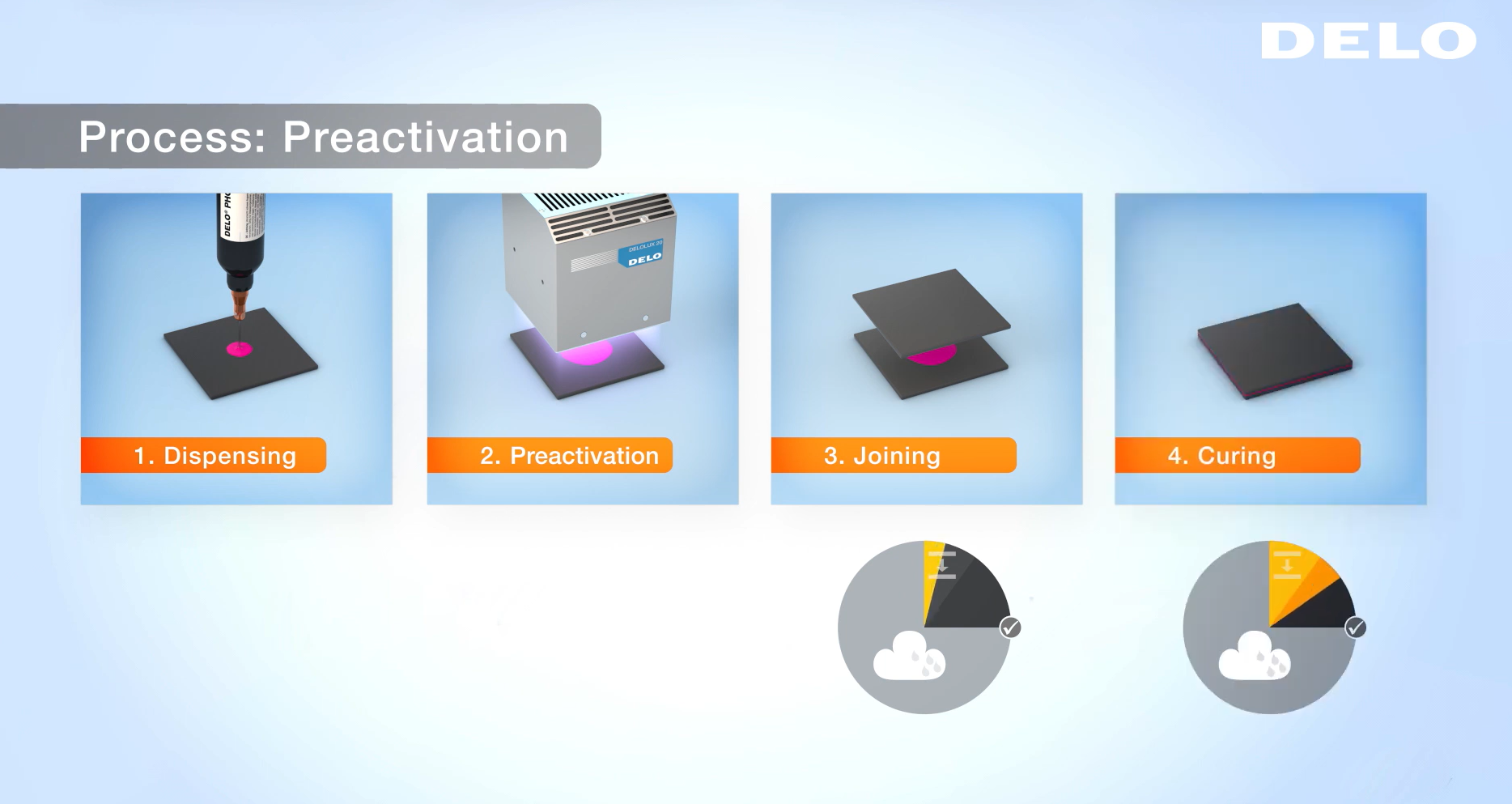
The glue layer after being coated on the first surface will be irradiated with UV light for a few seconds to activate the curing reaction, while the glue is still in a wet state, the open time is about 20 seconds after activated, enough for us to put the second surface on. This curing time can be longer or shorter depending on the UV intensity as well as the time of irradiation to activate the glue.
The glue will then need a few minutes to build up without further irradiation. After that, you can continue to proceed to the next assembly stages without worrying about the surfaces sliding on each other.
The adhesive will reach its maximum adhesive strength within 72 hours without further intervention. Heating for a few minutes after bonding can speed up the bonding process.
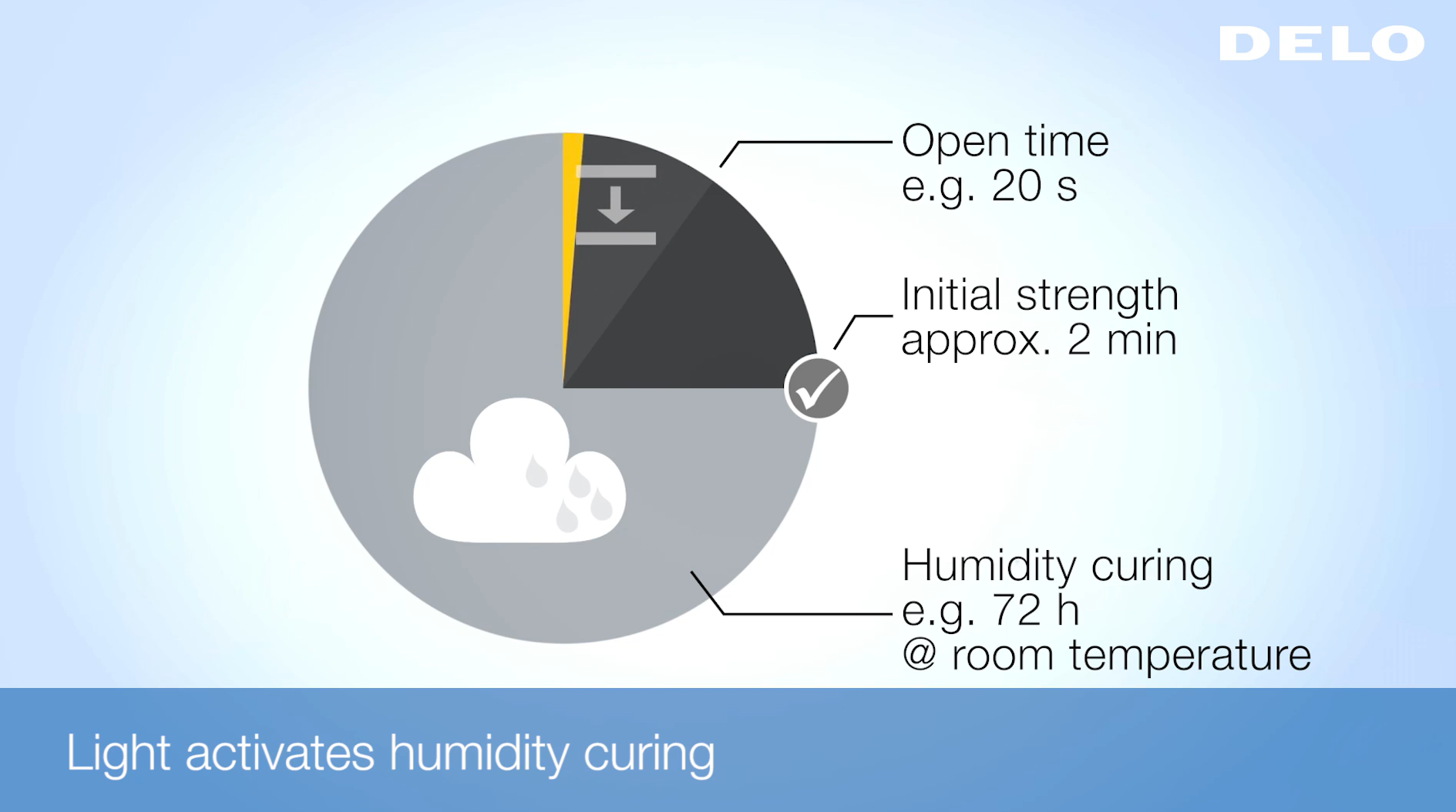
Activation glue is used in many applications such as the decoration of accessories inside car glass, opaque components that do not allow light to pass through, etc.
The glue lines that often use this method include the DELO PHOTOBOND LA (LA = Light Activative) line of urethane polymer glue or glue system derived from epoxy resin that is harder than KATIOBOND.
Watch the video below to better understand the UV glue activation process:
UV Bonding of Opaque Components With New Adhesive Technology
Summary:
Basically, the method of activating the glue by UV light is to reverse the adhesive sequence ( 2 ) and UV-cure the glue ( 3 ).
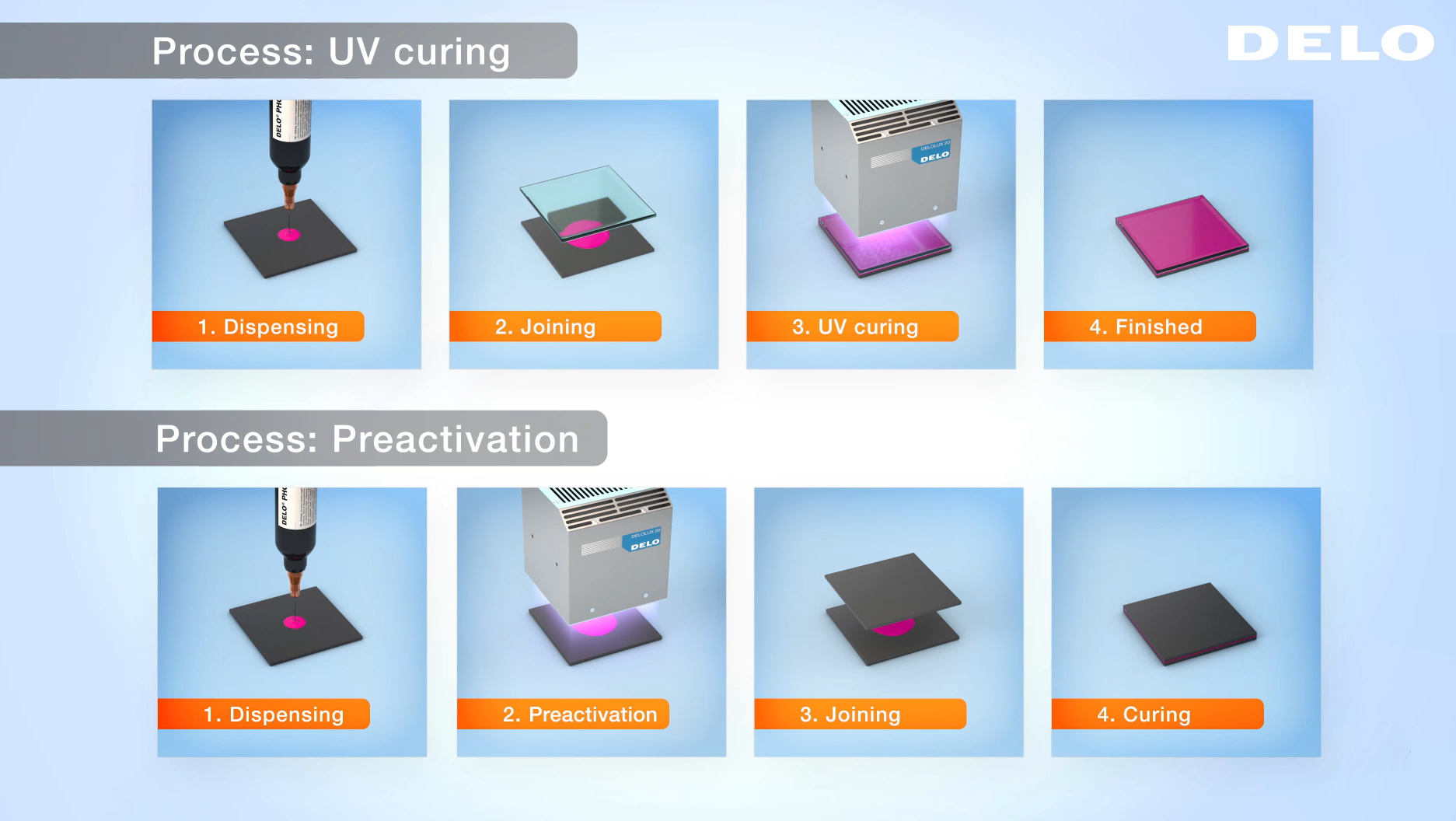
One small difference to note in this new method is that the glue activation time is shorter than the conventional curing UV exposure time, but it takes several minutes after bonding the two components to glue. Stable adhesion. Detailed techniques will be consulted by HUST VN in each case.
However, the biggest advantage of the new method is to solve the problem of using UV glue for non-transparent surfaces. Meanwhile, it still saves time for 1 glue bonding cycle.
For specific advice on the right glue line for your application, contact HUST VN!
